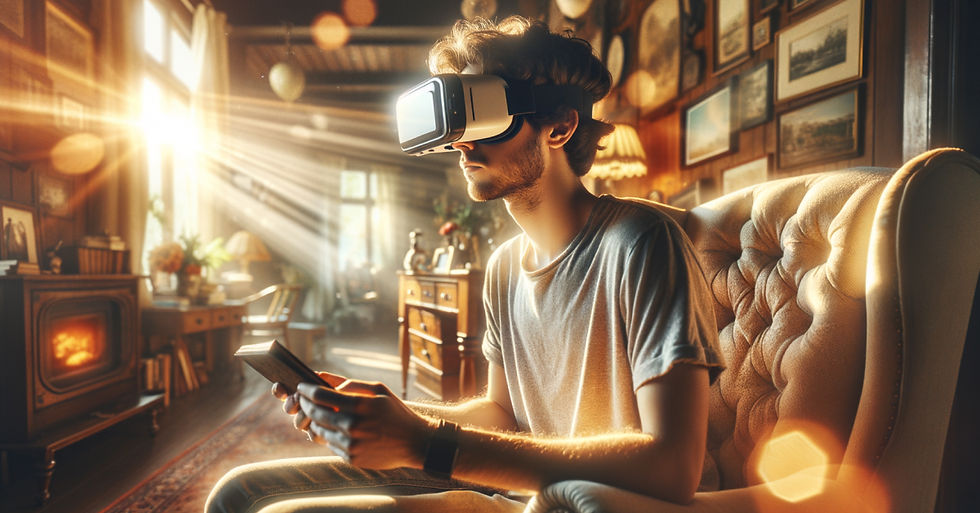In an age where digital innovation continuously reshapes our experiences, virtual tours have emerged as a groundbreaking way to explore the world from the comfort of our homes. This digital revolution has made it possible for individuals to traverse national parks, visit museums across continents, and even explore outer space without taking a single step outside their door. Today, we delve into the fascinating world of virtual tours, examining how they’ve become a new portal to discovery and learning.

The Rise of Virtual Exploration
The concept of virtual tours has been around for a while, but it gained unprecedented momentum during the global lockdowns caused by the COVID-19 pandemic. With travel restrictions in place and public spaces closed, institutions and companies turned to technology to bridge the gap between the world’s wonders and the confined audience yearning to explore.
From Museums to Outer Space
Virtual tours offer an array of experiences across different domains:
Museums and Galleries: Institutions like the Louvre, the Smithsonian, and the British Museum now offer online tours, allowing art and culture enthusiasts to peruse their collections from anywhere in the world.
National Parks and Natural Wonders: Platforms like Google Earth have made it possible to virtually hike through the Grand Canyon, wander around Yellowstone, or dive into the Great Barrier Reef.
Historical Sites and Cities: Virtual reality experiences enable users to walk through ancient cities, explore archaeological sites, and understand historical contexts in an immersive setting.
Astronomical Explorations: NASA and other space agencies have developed virtual tours of Mars, the International Space Station, and other celestial bodies, offering a glimpse into the universe’s vastness.
The Technology Behind Virtual Tours
The backbone of virtual tours lies in a mix of technologies, including 360-degree photography, virtual reality (VR), augmented reality (AR), and sophisticated web platforms that stitch these experiences together seamlessly. These technologies create immersive, interactive experiences that go beyond passive viewing, enabling users to interact with their environment and discover details in an exploratory manner.
Educational Impact
Virtual tours have opened new avenues for education, providing students and curious minds access to learning materials and experiences previously bound by geographical and financial limitations. Teachers can now complement their lessons with virtual field trips, enhancing engagement and understanding of complex subjects through experiential learning.
Challenges and Considerations
Despite their benefits, virtual tours face challenges, such as the digital divide limiting access for underserved communities and the potential for screen fatigue. Moreover, while virtual tours offer a valuable alternative, they cannot fully replicate the sensory experiences and emotional impact of physical travel and exploration.
The Future of Virtual Exploration
As technology advances, the potential for virtual tours is boundless. We’re moving towards more interactive, personalized experiences that could include elements of AI to curate tours based on individual interests, further blurring the lines between virtual and physical exploration.
Conclusion: Exploring the World from Home
Virtual tours have transformed our approach to exploration, education, and cultural immersion, proving to be a powerful tool in our increasingly connected world. They exemplify how technology can bring the world closer, making the wonders of the planet and beyond accessible to all. As we continue to navigate the possibilities of digital exploration, virtual tours stand as a testament to human creativity and the unending quest for knowledge and adventure.
FAQs: Discovering the World Through Virtual Tours
1. What are virtual tours?
Virtual tours are interactive, digital experiences that simulate visiting a real-world location through panoramic images, videos, and multimedia elements.
2. How do virtual tours benefit users?
They offer accessibility, convenience, and educational value, allowing users to explore places they might not otherwise visit and learn about them in depth.
3. What technology is used to create virtual tours?
Technology includes 360-degree cameras for capturing images, software for stitching images together, and platforms for hosting and sharing the tours.
4. How are virtual tours used in education?
They serve as interactive learning tools, providing immersive experiences of historical sites, natural wonders, and cultural landmarks to complement traditional educational content.
5. Can virtual tours replace traditional travel?
While virtual tours offer a convenient and accessible way to explore, they complement rather than replace traditional travel, offering a different experience that lacks the physical and sensory aspects of being in a new place.

Comments